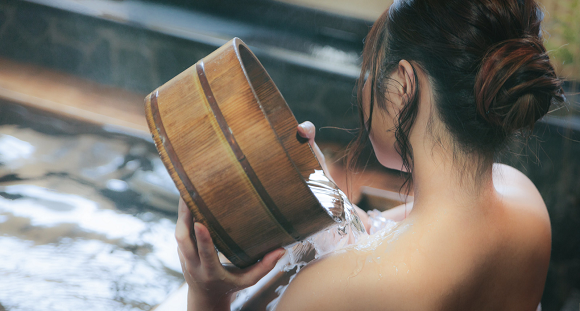
Child development expert weighs in on the tricky question, offers a solution from Japan’s samurai-era past.
While some Japanese hot springs operate under a konyoku policy, in which male and female bathers share the same tubs, for the most part bathing in Japan is gender-segregated, even when it’s communal. However, an exception is usually made for young kids.
The logic is pretty easy to follow. Sometimes, a child may be at an onsen/hot spring or sento/public bath with just one parent, and if there’s a mother with her son, it’s not reasonable to send him over to the men’s bath by himself if he’s under a certain age. The question, though, is what that age is.
Personal opinions on the matter often fall into factors like whether the boy (the majority of voiced complaints are about mothers taking boys into the women’s bath, as opposed to fathers taking daughters into the men’s bath) is old enough to get excited about seeing naked ladies, or to form concrete memories of what he saw. However, it turns out there’s no hard-and-fast numerical cutoff under Japanese law about when parents are no longer allowed to bring children into the opposite gender-segregated bath. In many people’s opinions, though, once a child starts the first year of elementary school (which occurs at the age of six in Japan), it’s probably about time for them to start using the bath for their gender.
▼ While female models in onsen advertising are often depicted with towels wrapped around their body, actual customers are required to bathe naked.
However, child development author Mitsuko Tateishi points out that this loosely defined guideline can lead to misunderstandings and discomfort. Children who are especially tall or large-framed for their age, for example, might be perceived as older than they really are, causing other bathers to be bothered by the presence of a boy in the women’s bath who’s actually not yet old enough to properly wash himself. Another potential issue Tateishi discusses is older children with autism or other mental health issues who require their mother’s assistance in the bath.
Still, Tateishi subscribes to the philosophy that once a boy is in elementary school, mothers should transition away from taking them into the women’s bath. By that age, she says, they should be getting the hang of how to scrub off their grime and shampoo their hair on their own before hopping into the shared tub (as is the Japanese custom), and should also be able to observe proper communal bathing etiquette such as not splashing, swimming, or letting their towel fall into the bathwater.
However, Tateishi does recognize that different children develop differently, and that not all kids are ready to bathe by themselves even after starting elementary school. In those cases, she recommends choosing hot springs that have private baths that can be rented for family use, while also expressing her hope that shared bathing facilities will bring back a custom from Japan’s feudal-era past.
Through the Edo period, Tateishi explains, public baths would employ attendants known as “sansuke.” For a fee, the sansuke would provide assistance such as washing the customer’s back. Tateishi says that bringing back such services, adapted into sort of an “in-bath babysitter” role, would allow boys who’re getting too old to go into the woman’s bath with Mom to more easily transition to using the men’s bath.
However, a few potential roadblocks to that plan quickly spring to mind. Aside from the additional cost, there’s the question of whether or not a mother who feels uneasy sending her son into the men’s bath by himself would really feel any more at ease if her child, who is of course going to be naked for the duration, is accompanied by an employee of the facility or if not, a stranger. Granted, Japanese society does place an extraordinary amount of faith in working professionals, but this seems like it’d be beyond the comfort level of many mothers.
The issue of how to handle young kids in the opposite gender’s bath is particularly tricky, because onsen/sento bathing facilities aren’t private like a public bathroom stall, nor is the goal to get in and out as quickly as possible, like with a changing room at a public pool. The whole point of Japan’s traditional bathhouses is to stretch out the bathing process and make it a relaxing ritual, so operators can’t dismiss out of hand complaints from customers who dislike having boys in the women’s baths. Nevertheless, with a far greater number of single mothers in Japan now than in the past, and the reinvigoration of the country’s love of onsen over the past decade and a half, it’s a topic that’s likely to continue being debated.
Source: Niconico News/Otona Answer via Jin
Top image: Pakutaso
Insert images: Pakutaso (1, 2)
Follow Casey on Twitter, where he’s only been in a woman’s bath in Japan once, during a hotel inspection when it was empty of customers.